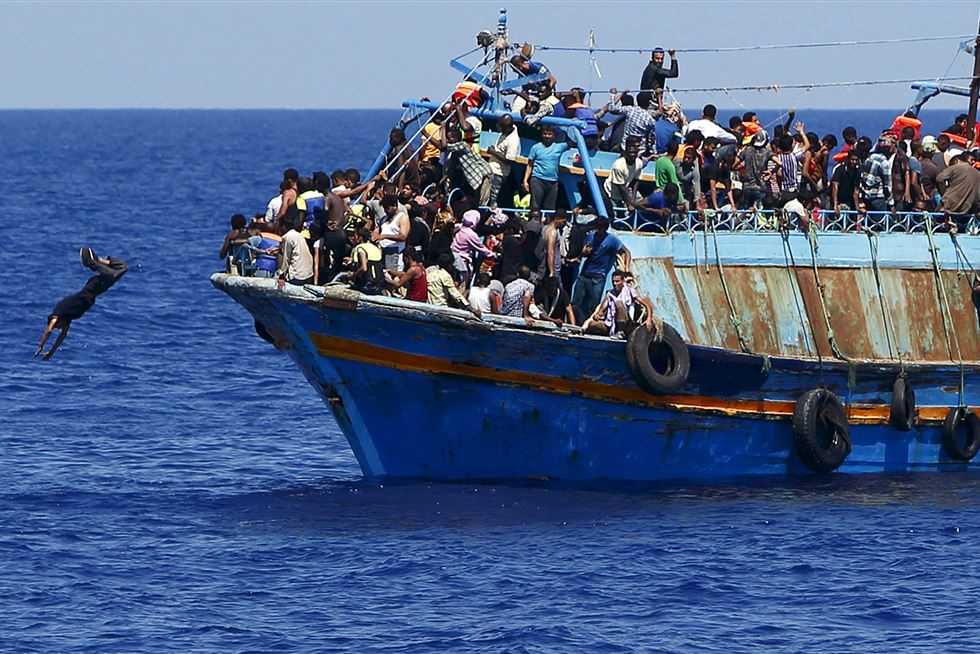The journey of thousands of Egyptians toward Europe, by desert, by dinghy, or by the hands of smugglers, remains treacherous amid tightened European controls, North African enforcement, and worsening risks at sea.
Egypt is currently a source country, transit hub for other nationalities, and a recruitment ground for smuggling networks, in coastal provinces and desert towns.
Economic stagnation, rising unemployment, and political pressures that limit legal avenues for migration have pushed some Egyptians and refugees to seek irregular passage. Between 2009 and 2024, over 71,200 migrants arrived illegally from Egypt to the EU, with the vast majority, amounting to 63,700, taking the Eastern Mediterranean route.
In May of this year, around 200-250 Sudanese were leaving Egypt weekly. They follow desert smuggling routes into northeastern Libya before attempting the sea journey to the Greek island of Crete. often as economic migrants, to flee localized repression or the fallout from regional conflicts.
Irregular Crossings
However, during the first seven months of 2025, all migratory routes saw an overall 18 percent decline in irregular crossings into the European Union compared with the same period last year, according to Frontex, a European Border and Coast Guard Agency.
Eastern Mediterranean crossings fell 16 percent to 26,200, but a new path from eastern Libya to Crete has emerged, bringing more than 10,000 arrivals this year, which is over four times last year’s figure.
The Central Mediterranean route, which links North Africa to southern Europe, recorded nearly 36,700 crossings, a nine percent increase, with most departures from Libya, where well-organized smuggling networks continue to operate despite heightened enforcement. In the west, crossings rose 11 percent, fueled by Algerian-Moroccan networks offering routes to Spain for EUR 900 (EGP 50,640) to EUR 20,000 (EGP 1.125 million), including journeys through Tunisia, Algeria, Turkey, and the Western Balkans.
While irregular crossings dropped 20 percent overall, in the first half of 2025, the Central Mediterranean remained the busiest route, accounting for 39 percent of 63,700 irregular arrivals, with flows shifting from Tunisia to Libya.
Smuggling Networks
According to Reuters, governments from Athens to Rome are doubling down on deterrence as of July. Libya’s coastguard and other North African authorities are increasingly intercepting and detaining migrants.
Italy, Spain, and other EU states have intensified cooperation with North African partners, including Tunisia, Libya, and Egypt, to limit departures, return intercepted migrants, and hunt smuggling networks.
While officials attribute the decline in irregular crossings at Europe’s borders to increased patrols, stronger cooperation with transit countries, and more aggressive pushbacks and returns, pressure remains high on Central Mediterranean routes linked to departures from Libya, Tunisia, and Egypt.
However, changing routes and tougher bilateral deals have shifted flows rather than ended them.
Recent law-enforcement actions have shown the adaptive nature of smuggling rings moving Egyptians across the sea. In recent years, Egyptians have been reported as smugglers and irregular migrants, using multiple routes into and across the EU, including the Mediterranean and the Western Balkan routes.
In April 2025, Europol led a series of coordinated arrests across several countries targeting a criminal network, largely composed of Egyptians, accused of smuggling irregular migrants across the Mediterranean.
The Deadliest Migration Corridor
The International Organization for Migration (IOM) warned, on 10 June, against the deadly cost of irregular migration, as 10 migrant bodies washed ashore near Egypt’s Mediterranean city of Marsa Matruh.
“This tragedy is yet another painful reminder of the high cost of irregular migration and the urgent need for coordinated international efforts to provide inclusive, safe, and regular pathways for all,” the IOM statement said, citing over 32,000 Mediterranean deaths since 2014.
The Mediterranean remains among the world’s deadliest migration corridors. As of 7 August, 1,229 people have been reported dead or missing on the Mediterranean and Northwest Africa maritime routes.
Meanwhile, humanitarians warn that the result is more danger, clandestine desert routes, and concentrated pockets of suffering for would-be migrants from Egypt and beyond.







Comments (0)